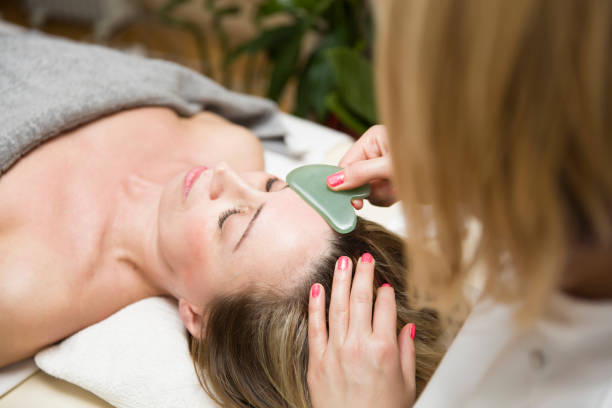INTRODUCTION TO ACUPUNCTURE & TRADITIONAL CHINESE MEDICINE
In Traditional Chinese Medicine (TCM), the Qi is believed to flow through the body along energy channels referred to as meridians. There are 14 regular meridians, either Yin or Yan in nature. On each meridian, there exists many points which can be used to treat a number of conditions. If qi in the meridians is deficient, blocked or out of balance, symptoms such as pain will appear. The qi can be restored by the insertion of needles into specific acupuncture points to increase, decrease, move or unblock qi.
In Traditional Chinese Medicine (TCM), the Qi is believed to flow through the body along energy channels referred to as meridians. There are 14 regular meridians, either Yin or Yan in nature. On each meridian, there exists many points which can be used to treat a number of conditions. If qi in the meridians is deficient, blocked or out of balance, symptoms such as pain will appear. The qi can be restored by the insertion of needles into specific acupuncture points to increase, decrease, move or unblock qi.
HOW DOES IT WORK & WHAT CAN ACUPUNCTURE TREAT?
There exists 2 models to practice acupuncture. One way is according to the Classical Acupuncture model, and the other way is according to the Anatomical Acupuncture model. Practitioners trained in TCM practice uses both models.
Classical acupuncture evolved over thousands of years and has stood the test of time. It is a system to restore balance, alleviate pain and eliminate other symptoms as required. It is based on TCM diagnosis whereby the face, tongue, pulse and a general medical history of body systems are evaluated resulting in prescription of a set of acupuncture points to treat.
Anatomical acupuncture involves selection of acupuncture points which are related/associated with the anatomical structures (e.g. knowledge of the muscles, tendons, ligaments, nerves, and organs) and physiological functions (e.g. knowledge of the organ systems such as the nerves and nervous system).
The major difference between the 2 models are as follows:
- Classical practitioners can treat any medical conditions that family physicians can treat e.g. irregular menstrual cycles and infertility, mental health issues, muscle sprains and strains etc.
- Anatomical practitioners usually can only treat conditions involving dysfunctions of the muscles, joints, tendons and nerves. The latter group of practitioners usually consist of chiropractors, physiotherapists and massage therapists whose scope of practice involves caring for the nervous system and the physical body e.g. muscles, joints and tendons.
SELECTION OF ACUPUNCTURE POINTS
Some acupuncture points may be on the area(s) of complaint called local points vs. some points may be located far away from the area(s) of complaint called distal points. For example, treatment of tennis elbow often in involves needling the muscles and tendons that attach to the outer edge of the forearm close to the crease of the elbow - these are the local points. In addition, distal points are chosen to complement the local points being treated. This is why the acupuncturist is needling in an area that does not bother you.
WHAT DURATION DO I NEED?
For the initial session, a thorough history and examination is undertaken which will require 75 minutes duration. Then, treatment will be rendered for the remainder of the session.
The acupuncture practitioner will recommend what duration to book for your follow-up appointment, but generally, the minimum amount of time is 45 minutes, and the general treatment time is 60 minutes. If you wish to have a combination of acupuncture with needles combined with Chinese massage techniques (Tuina), the minimum required time will be a follow-up treatment session of 75 or 90 minutes.
WHAT TO EXPECT DURING AN ACUPUNCTURE SESSION?
Depending on your preference, acupuncture treatments can be delivered in a traditional format using needles or needleless using acupressure or other methods, such as Chinese massage (Tuina), Guasha, Cupping as part of the treatment to stimulate acupuncture points and meridians. Please let the acupuncture practitioner know your preference.
Depending on your condition(s), herbal medicine may also be recommended by the licensed TCM practitioner to help you with your condition in addition to the treatments provided within acupuncture.
Cupping
Cosmetic Gua Sha & Acupuncture
Proudly powered by Weebly





